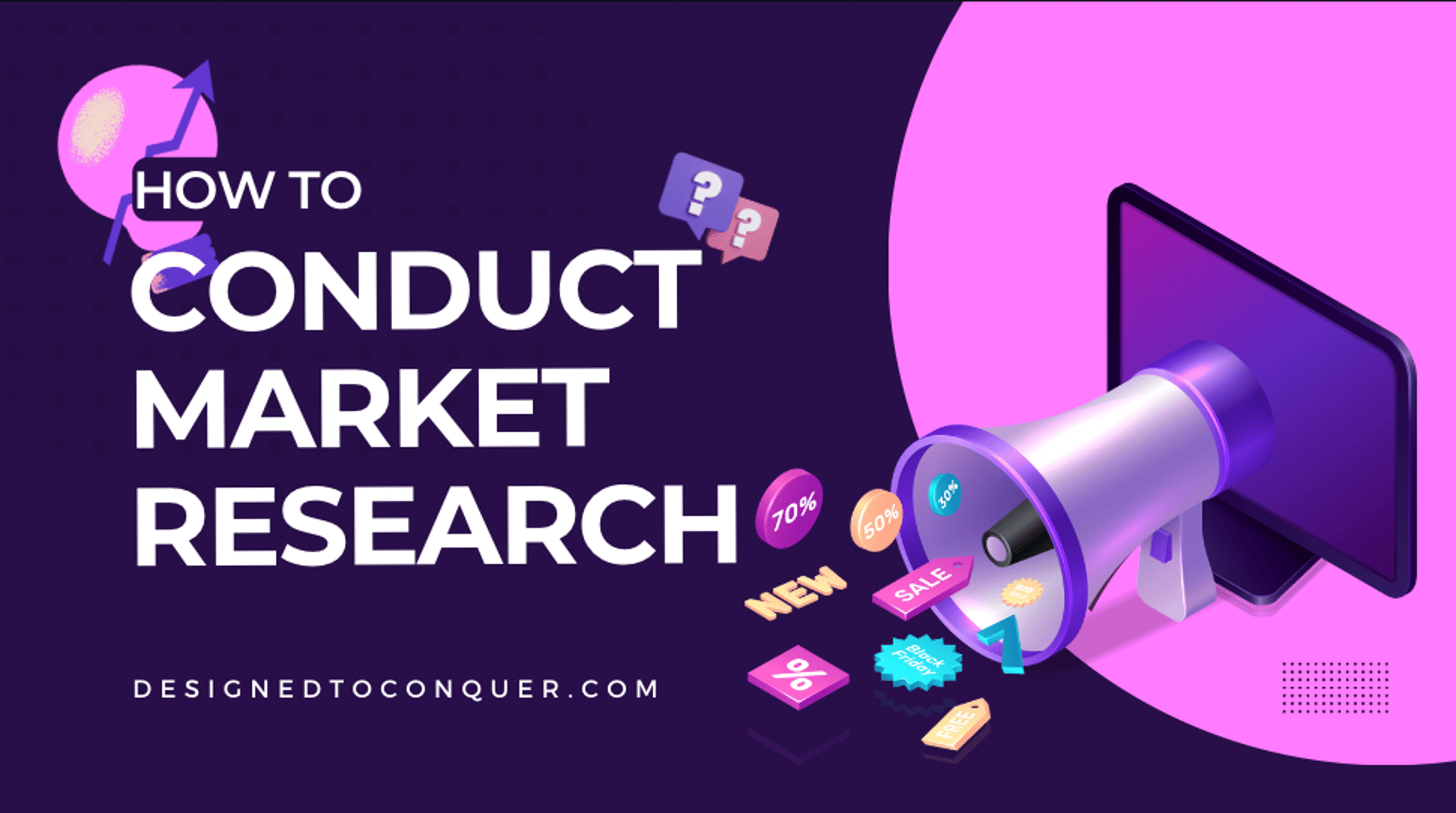
Conduct Market Research
Join me as we uncover the vital role of responsive design in our mobile-centric era, exploring its benefits.
10/12/20236 min read

How to Conduct Market Research
Research is all about finding answers to questions about your business so that you make smart decisions.
Some of those answers you’ll find by talking directly with people like your prospective customers, and some of them you’ll find by gathering facts and data from more formal sources.
Before we go through the different methods you can use to conduct research, here's a quick distinction between the two types of research: primary and secondary. You might hear these terms come up so we've defined them for you below, but at the end of the day, it doesn’t matter what word you use to define it: just get out there and research!
Primary research is research you collect directly from the source through interviews, questionnaires, surveys, and conversations with industry experts, prospective customers, and competitors.
Secondary research involves gathering data that already exist in some form. For example, through internal databases, online databases, periodicals, blogs, industry associations, or research reports.
TIP: It’s tempting to spend too long behind a computer screen looking at data that someone else has collected. Although it’s useful, this kind of secondary research can’t give you the personal perspective you need for your product or service.
Getting that valuable personal perspective means heading right to the source—your potential customers. Your customers themselves will provide you with the most current and useful information about the viability of your product or service because only they can tell you what they think about your idea.
Surveys and Interviews
Let’s take a look at some ways you can get valuable information from your prospective customers. First, the most common methods:
Surveys. A common, inexpensive, and effective way to get to know your customers is to create a survey that contains a list of key questions you want to get feedback on. You can ask these questions in person, over the phone, or through an online or mail questionnaire.
What they're good for. The information you gather is current and helpful for determining whether a market for a new product or service exists. Also, surveys can result in future sales by giving potential customers a preview of the product or service.
Interviews. Conducting interviews is similar to customer surveys and is usually done over the phone or in person. Individual interviews are usually no longer than 30 minutes, although they may be longer if participants are willing. Because interviews involve more dialogue between the researcher and participants, this research technique will provide you with in-depth responses and the most relevant information.
What they're good for. Getting detailed feedback and helping you to see into the thought process of your potential customers. You can use this insight to better develop and market your product or service.
ASK YOURSELF: If you had a prospective customer sitting in front of you right now, what questions would you want to ask him or her?
How to Conduct Surveys and Interviews
Determine your goals. Figure out what you want to find out and how you'll use the information. Remember, you're looking to understand what people think of your product/service idea, if it solves a problem for them, if they'd be willing to buy it, etc.
Ask questions that will give you valuable information for your research. Questions should focus on customers’ needs, their preferences on product or service features, and benefits, pricing, location, marketing sources, or buying behaviors. Consider these question examples:
If two restaurants are located close together, what makes you choose one over the other?
What is your favorite grocery, retail store, or bookstore? Why do you enjoy shopping there?
Which companies do you refuse to do business with? Why?
Who do you buy this product from? What do you like best about buying from that company?
Decide which method is best for collecting the data you need. If you have a small number of people to reach, maybe 20 or fewer, you might want to conduct research by phone or in person. The complexity of the questions will determine the best way to gather information from your target market.
If the sequence of later questions can be determined by how customers respond to previous ones, then online surveys work well. For example, if you want feedback on customers’ preferences, an online survey allows customers to post comments about products or respond to a questionnaire. Depending on how they respond to specific questions, the software pulls up subsequent questions.
If you need to see their reactions to a product or service, then you need in-person contact. For example a live taste-test booth could be set up in a shopping area where customers could sample products and provide feedback to a researcher.
Summarize and evaluate the information gathered. Determine whether similar responses indicate a trend within your market. Take into account people’s motives for taking the survey, the time allotted, incentives offered, and other factors that could affect the validity of the answers.
TIP: Test your survey or interview questions with friends or family first. Even though they may not represent your target customer, testing often reveals unclear questions that do not gather the type of information you are seeking.
Focus Groups
Focus groups. This method can provide marketing insights while identifying the hidden needs of potential customers. With this technique you can gather information from a group of people instead of using a one-on-one approach.
What they're good for. Focus groups allow you to collect more information in the same amount of time at a fairly reasonable cost. The interaction among participants can also reveal more than you might not get individually. You can benefit from using this research technique, especially when identifying niche markets and learning more about a specific group of customers.
Keep in mind, however, that the viewpoints of a small number of people in a focus group may not always reflect attitudes of the market as a whole. Be sure you include a large enough cross section of your market in the focus group.
How to Conduct a Focus Group
Determine your goals for the focus group by deciding how you will use the information you are seeking.
Develop questions to ask participants and an agenda for the focus group(s).
Invite participants who have demographics similar to your customer profile.
Plan the logistics for conducting the session:
Schedule the focus group meeting at a convenient time for participants. A typical focus group takes about one to two hours.
Find a meeting room or relaxed atmosphere to ensure an informal discussion of participants’ opinions and feelings.
Find an unbiased, skilled moderator to lead the group. The moderator asks broad questions at the beginning and then focuses the group discussion on the specific information you want to obtain. Moderators can probe the group, stressing the importance of sharing different points of view and emphasizing that there is no right or wrong answer.
Use a data collection source that doesn’t interfere with the discussion. It is best to record or videotape the focus group discussion. You can then analyze and interpret feedback from participants and compare it with your business concept and other market research.
Observations
Observations. This research technique collects customers' reactions and behaviors without actually talking with them.
For example, if an ice cream company wants to know whether people will like their new dairy-free ice cream, they may set up a free samples booth at a shopping center and observe the expressions on their participants faces. Smiling faces is a good indication that their coconut-based treat is a hit.
What they're good for. When you want to learn how customers approach products or services without the potential bias of a researcher. Customers react normally because they think no one else is watching.
Conducting Secondary Research
As we mentioned earlier, secondary research includes information you get from magazine articles, books, publications, trade journals, libraries, or data collected by the Census Bureau or chambers of commerce. You can find secondary information in print and online.
What it's good for. It can be helpful to answer questions about industry trends, customer demographics, and spending habits.
If you have a new product or service or a niche market, some types of secondary research information may not be available (eg, if you are developing a food app for people with specific dietary restrictions, you may have a hard time getting specific data on how many people with those restrictions are local to an area).
Working with a research professional, such as a reference librarian, you can determine which sources have the most bearing on your research needs. In some rare cases, you may find that conducting primary research is the only means to collect relevant information for your business concept.
Related Articles
©2025 Designed To Conquer LLC Terms & Conditions FAQ
Designed To Conquer LLC is a NYS MBE Certified Creative Tech. Studio.
STUDIO HOURS
Monday: 10am-6pm
Tuesday:10am-6pm
Wednesday:10am-6pm
Thursday:10am-6pm
Friday:10am-6pm
Instantly access our library of free coaching business resources!





